Making your bike seat more comfortable is essential for enjoying long rides, and usabikers.net is here to help. A comfortable bike seat can eliminate pain, numbness, and saddle sores, allowing you to focus on the joy of cycling. Whether you’re adjusting your bike fit, experimenting with different saddles, or optimizing your tire pressure, we’ll explore various strategies to enhance your riding experience, focusing on seat adjustments, handlebar modifications, and ergonomic enhancements for a smoother, more enjoyable ride. Discover the secrets to a pain-free ride with usabikers.net.
1. Adjust Your Reach
Is your reach the key to a comfortable ride? Yes, the horizontal distance from your bottom bracket to your handlebars significantly impacts your comfort and stability on the bike. Improper reach can lead to sore shoulders, a tight lower back, and even saddle sores. To adjust your reach effectively, start by experimenting with different stem lengths, opting for a shorter stem if your reach feels too long, or a longer stem if it feels too short. For a quick and easy adjustment, try sliding your saddle forward or backward, but remember to double-check your saddle height afterward.
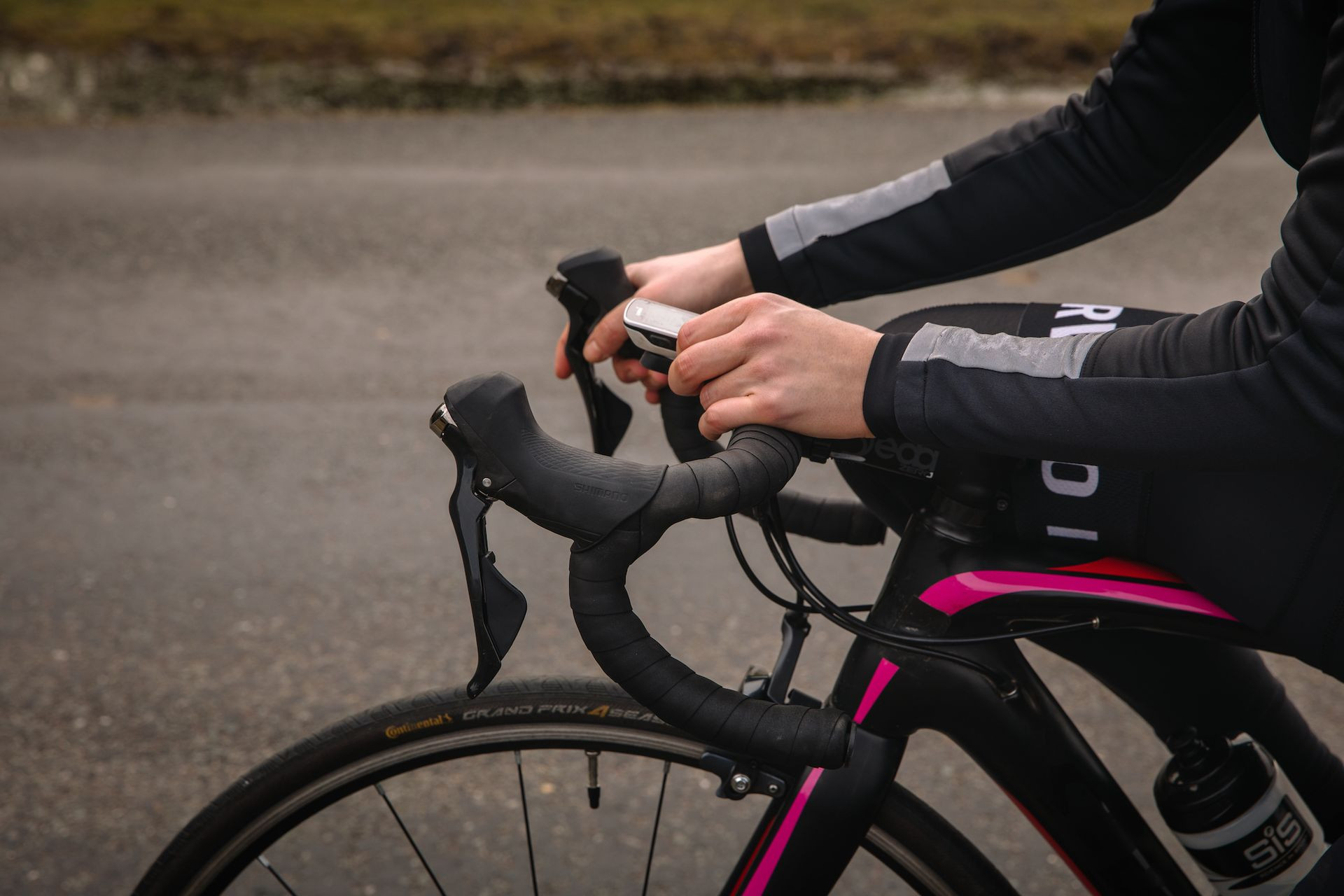 Front end of the bike showing reach
Front end of the bike showing reach
Image showing the front end of the bike, highlighting the reach measurement.
1.1 Why is Reach Important?
Reach affects your overall posture and balance on the bike. Too much reach can cause you to overextend, leading to discomfort and potential injury. Too little reach can cramp your position, reducing power and efficiency.
1.2 How Do I Know if My Reach is Wrong?
Common signs of incorrect reach include:
- Sore shoulders or neck
- Lower back pain
- Numbness in hands or fingers
- Feeling stretched out or cramped
1.3 What Other Factors Affect Reach?
Besides stem length and saddle position, consider:
- Handlebar Shape: Different handlebar shapes offer varying reach options.
- Frame Size: Ensure your bike frame is the correct size for your body.
- Flexibility: Your flexibility can influence your ideal reach.
2. Adjust Your Handlebar Height or Stem Angle
Does handlebar height impact riding comfort? Absolutely, adjusting your handlebar height or stem angle can significantly enhance your riding comfort. Many riders “slam” their stems by removing spacers, but this isn’t always ideal for comfort. Increasing handlebar height by adding spacers provides a more upright position, reducing pressure on your shoulders, wrists, and hands. You can also adjust handlebar height by changing the stem angle, either by flipping your current stem or investing in a new one. Remember to check your reach after making these adjustments to maintain the correct fit.
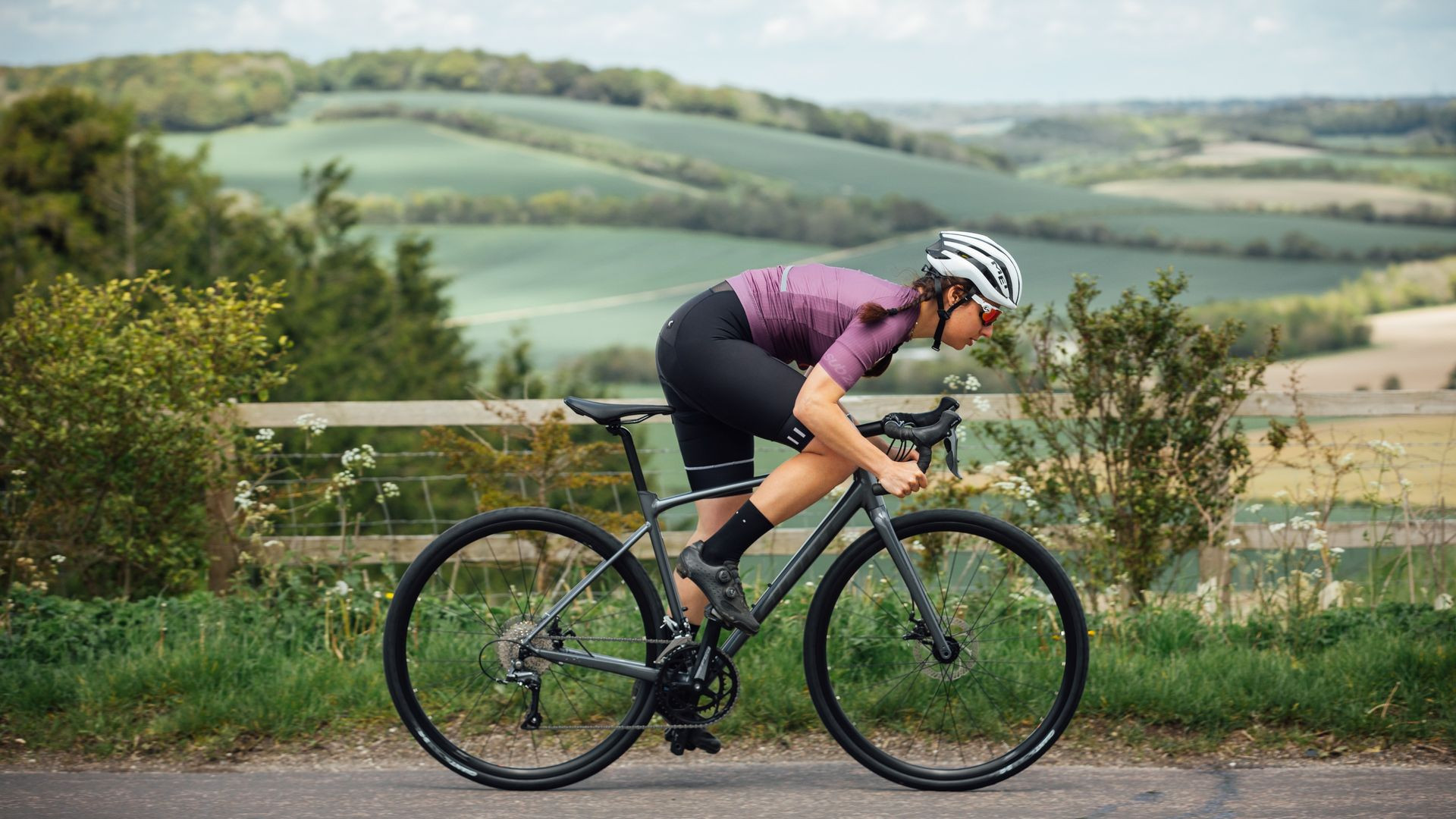 Rider out of the saddle in an aggressive riding position
Rider out of the saddle in an aggressive riding position
Image showing a rider in an aggressive riding position, emphasizing handlebar height.
2.1 Why is Handlebar Height Important?
Handlebar height affects your posture, weight distribution, and aerodynamics. Finding the right balance is crucial for comfort and performance.
2.2 How Do I Know if My Handlebar Height is Wrong?
Signs of incorrect handlebar height include:
- Neck pain or stiffness
- Shoulder pain
- Numbness in hands
- Difficulty breathing
2.3 What Are the Different Ways to Adjust Handlebar Height?
- Adding or Removing Spacers: Moving spacers above or below the stem changes the handlebar height.
- Flipping the Stem: Changing the stem angle can raise or lower the handlebars.
- Using a Stem with Adjustable Angle: These stems allow you to fine-tune the handlebar height.
3. Try a Different Saddle
Can a new saddle solve my discomfort? Yes, trying a different saddle is often the best solution for bike seat discomfort and saddle sores. Contrary to popular belief, larger saddles with excessive padding are not always the most comfortable. Thinner, anatomically fitted saddles with a split or cutout tend to work better for most cyclists, reducing chafing and pressure. Visit your local bike shop to trial different saddles and find one that suits your personal preferences.
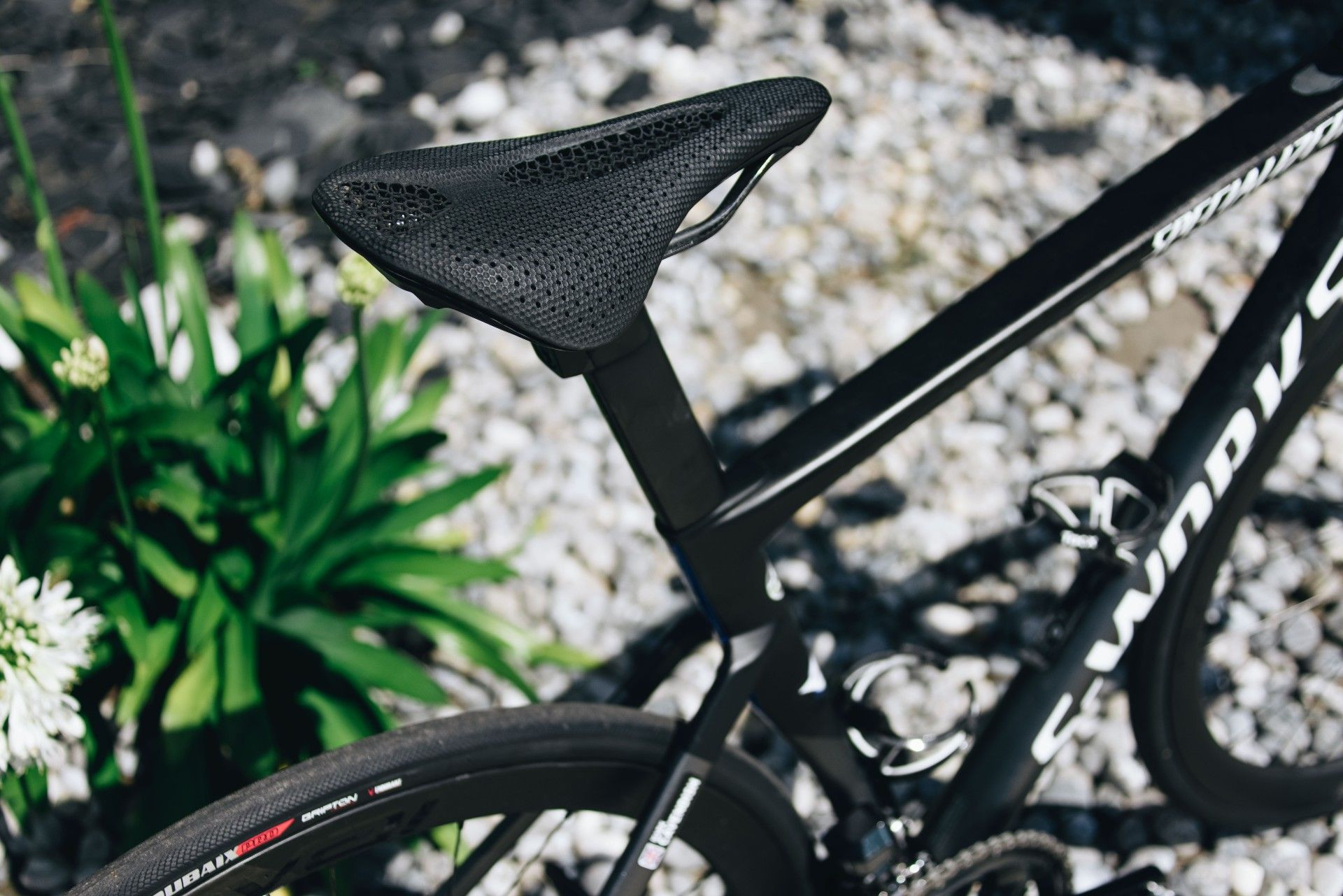 Bike saddle close up
Bike saddle close up
Image of a bike saddle, highlighting its design and features.
3.1 Why is Saddle Choice Important?
The saddle is your primary contact point with the bike, making it essential for comfort. A poorly chosen saddle can lead to pain, numbness, and even serious health issues.
3.2 How Do I Choose the Right Saddle?
Consider these factors when selecting a saddle:
- Width: Measure your sit bone width to find the appropriate saddle width.
- Shape: Experiment with different shapes, such as flat, curved, or with a cutout.
- Padding: Balance padding with support to avoid excessive pressure and chafing.
3.3 What Are the Different Types of Saddles?
| Type of Saddle | Features | Benefits |
|---|---|---|
| Road Saddle | Lightweight, minimal padding, narrow profile | Efficient power transfer, suitable for racing and performance riding |
| Mountain Bike Saddle | Durable, slightly wider, moderate padding | Comfortable for varied terrain, provides stability and control |
| Touring Saddle | Wide, ample padding, often with gel inserts | Maximum comfort for long-distance rides, reduces pressure on sensitive areas |
| Women’s Specific Saddle | Shorter length, wider sit bone area, often with a cutout | Designed to accommodate the female anatomy, improves comfort and reduces pressure |
4. Check Your Saddle Height
Is saddle height crucial for comfort? Absolutely, rechecking your saddle height is always worthwhile, as even a slight change can impact your comfort and performance. A saddle that is too low can compromise your power output and pedaling efficiency, while a saddle that is too high can cause knee pain and IT band syndrome. Measure your inseam and subtract 10cm to set your saddle height, adjusting as needed to find the optimal position.
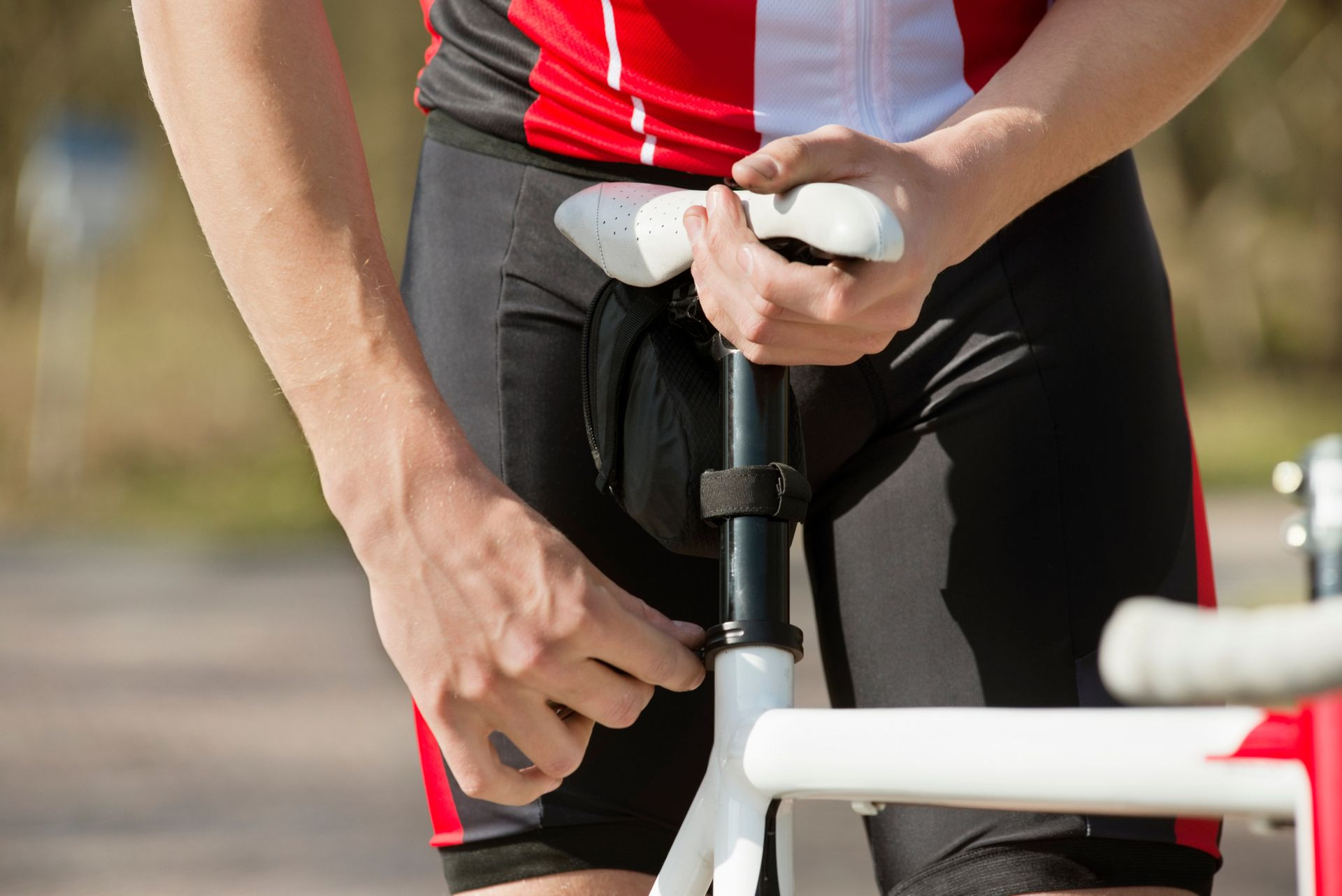 Rider adjusting saddle height
Rider adjusting saddle height
Image of a rider adjusting saddle height, emphasizing proper measurement.
4.1 Why is Saddle Height Important?
Saddle height affects your leg extension, muscle activation, and joint health. Proper saddle height optimizes power output and reduces the risk of injury.
4.2 How Do I Determine the Correct Saddle Height?
Use these methods to find your ideal saddle height:
- Heel Method: Place your heel on the pedal at the bottom of the stroke; your leg should be fully extended.
- Inseam Measurement: Measure your inseam and multiply by 0.883 to get your saddle height.
- Professional Bike Fit: A bike fitter can accurately determine your saddle height based on your biomechanics.
4.3 What Are the Consequences of Incorrect Saddle Height?
| Issue | Saddle Too Low | Saddle Too High |
|---|---|---|
| Power Output | Reduced power and efficiency | Inefficient pedaling motion |
| Knee Pain | Pain on the front of the knee | Pain on the back of the knee |
| Muscle Fatigue | Increased fatigue in the quadriceps | Increased fatigue in the hamstrings |
| Risk of Injury | Higher risk of knee and hip injuries | Higher risk of knee and IT band injuries |
5. Adjust Your Saddle Angle
Can saddle angle really make a difference? Yes, adjusting your saddle angle can significantly improve your comfort by altering the pressure points on your sit bones. Some riders prefer the saddle nose tilted down, while others prefer it tilted up. Experiment with different angles to find what works best for you, as even a slight adjustment can alleviate discomfort and improve your riding experience.
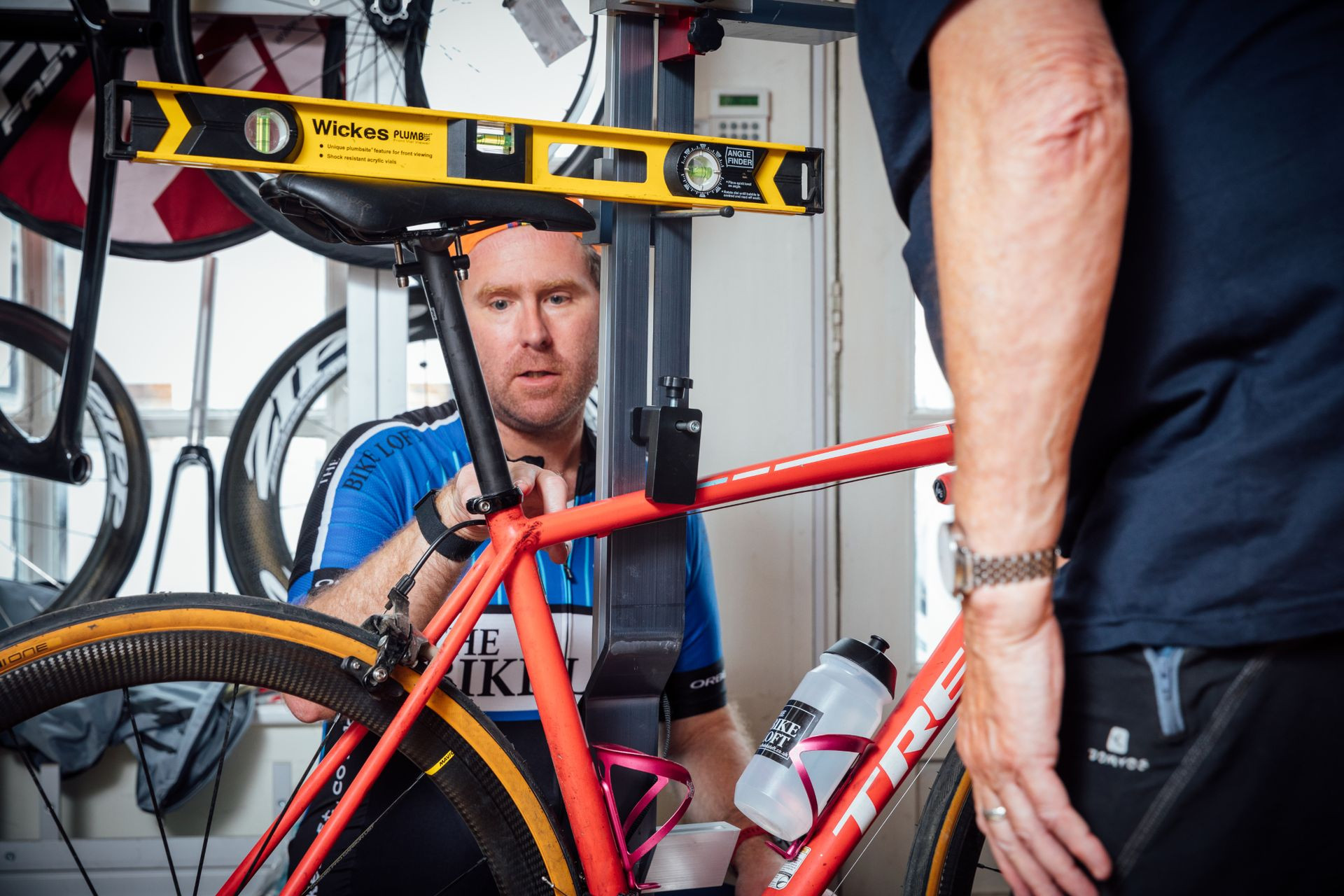 Saddle angle being measured
Saddle angle being measured
Image showing saddle angle being measured for adjustment.
5.1 Why is Saddle Angle Important?
Saddle angle affects your weight distribution and pressure on your soft tissues. Proper saddle angle can alleviate discomfort and prevent saddle sores.
5.2 How Do I Adjust Saddle Angle?
- Level Saddle: Start with the saddle level and make small adjustments from there.
- Nose Up: Tilting the nose up can relieve pressure on the perineum but may increase pressure on the sit bones.
- Nose Down: Tilting the nose down can relieve pressure on the sit bones but may increase pressure on the arms and hands.
5.3 What Are the Potential Benefits of Different Saddle Angles?
| Saddle Angle | Potential Benefits | Considerations |
|---|---|---|
| Level | Balanced weight distribution, good starting point | May not be ideal for everyone |
| Nose Up | Relief from perineal pressure, better for riders with flexibility | May cause increased pressure on sit bones |
| Nose Down | Relief from sit bone pressure, better for riders with less flexibility | May cause increased pressure on arms and hands, potential for sliding |
6. Check Your Cleats
Are cleats a source of discomfort? Yes, incorrect cleat setup is a leading cause of lower body pain in cycling, often overlooked in bike shops and cafes. Improper cleat positioning can lead to knee and hip pain, IT band syndrome, and ankle problems. Start with your cleats positioned in the middle of your shoe, aligning with the ball of your foot, and consider using cleats with float to allow slight movement while clipped in. If discomfort persists, consult a professional bike fitter for personalized adjustments.
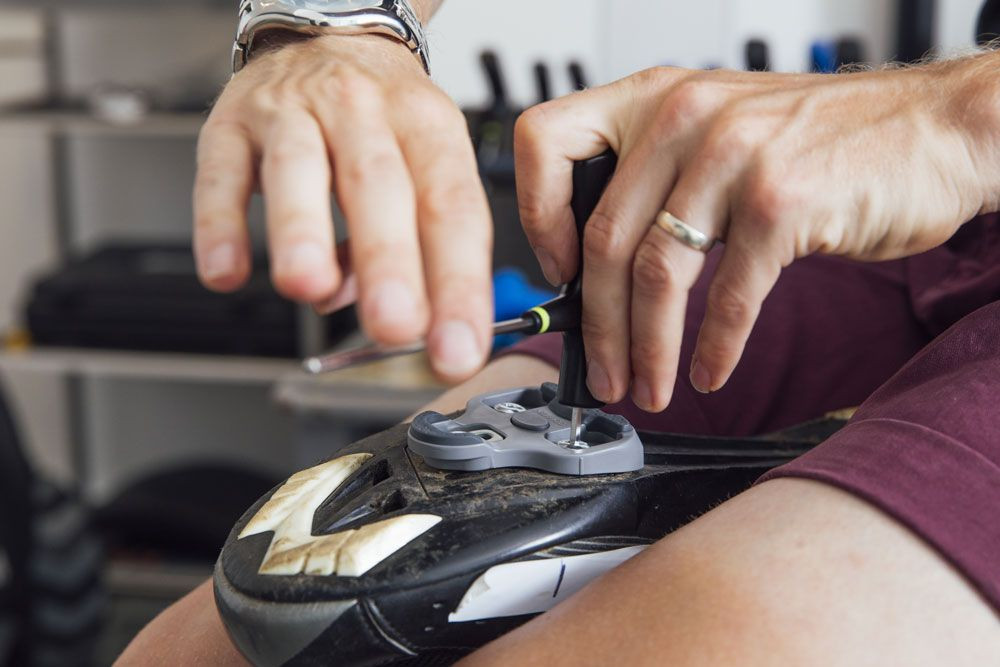 Rider adjusting cleat setup
Rider adjusting cleat setup
Image of a rider adjusting cleat setup, emphasizing proper alignment.
6.1 Why is Cleat Position Important?
Cleat position affects your knee alignment, pedaling efficiency, and risk of injury. Proper cleat position ensures your foot is aligned with your knee and hip.
6.2 How Do I Position My Cleats Correctly?
- Neutral Position: Start with the cleat in a neutral position, aligning the center of the cleat with the ball of your foot.
- Float: Use cleats with float to allow for natural movement and reduce stress on your joints.
- Professional Fitting: A bike fitter can assess your biomechanics and adjust your cleats for optimal performance and comfort.
6.3 What Are the Common Cleat Adjustment Issues?
| Issue | Symptoms | Solution |
|---|---|---|
| Medial/Lateral | Knee pain on the inside or outside of the knee | Adjust cleat medially or laterally to align knee with pedal stroke |
| Fore/Aft | Hot spots on the ball of the foot, numbness in toes | Adjust cleat fore or aft to distribute pressure evenly |
| Rotation | Heel rubbing against crank arm, ankle pain | Rotate cleat to allow for natural foot angle |
7. Double Wrap Bar Tape
Is double-wrapping bar tape effective? Yes, double-wrapping bar tape is an old-school trick used by professional cyclists to add extra cushioning and comfort, especially during races over rough terrain like Paris-Roubaix. Adding a second layer of bar tape or gel inserts underneath provides additional padding, absorbing shocks and vibrations from the road for a smoother, more comfortable ride.
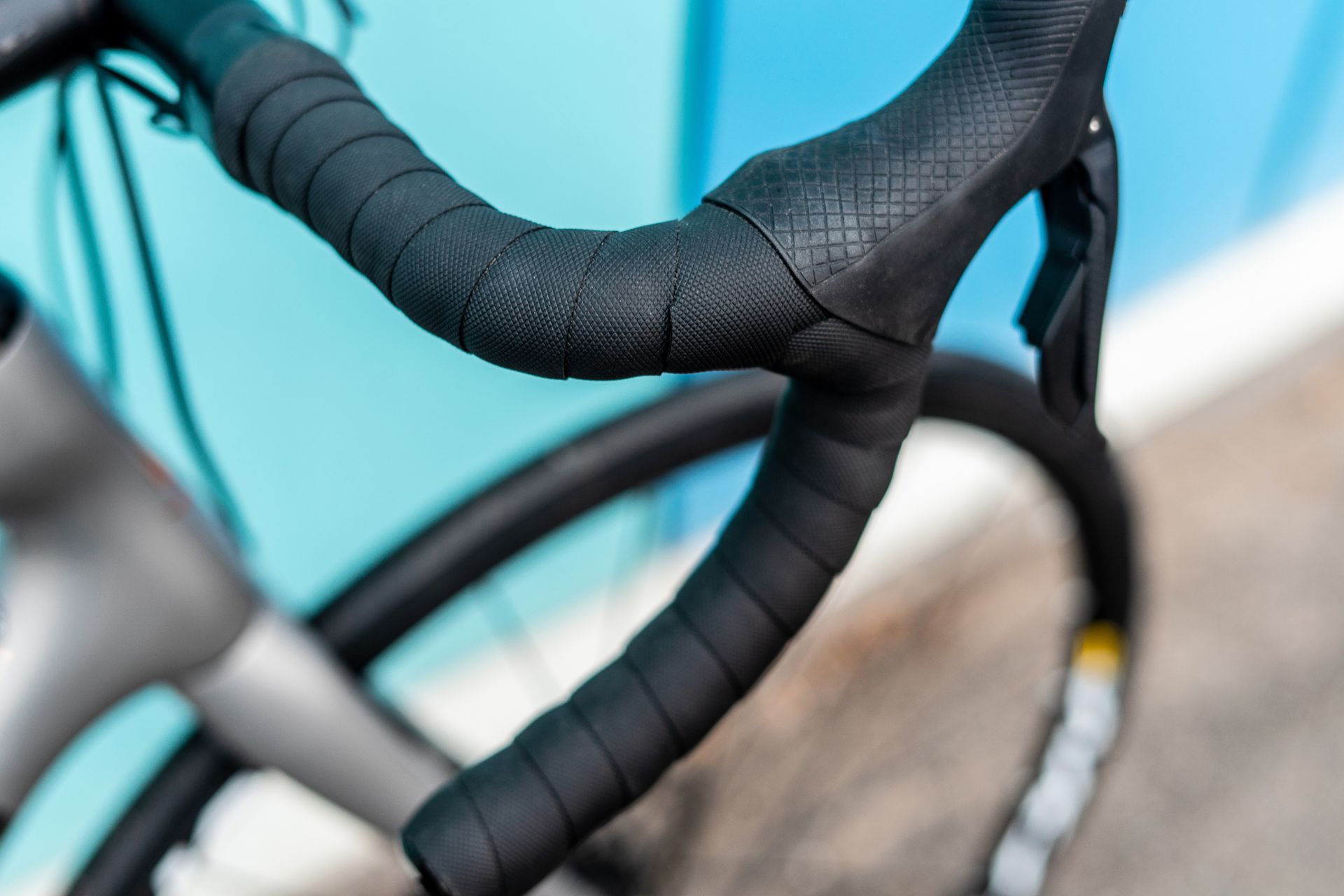 Close up image of bar tape
Close up image of bar tape
Image of bar tape, highlighting its texture and wrapping.
7.1 Why is Bar Tape Important?
Bar tape provides cushioning, grip, and vibration damping for your hands. It can significantly improve comfort, especially on long rides.
7.2 How Do I Double Wrap Bar Tape?
- Clean the Handlebars: Remove old bar tape and clean the handlebars.
- Apply Gel Inserts (Optional): Place gel inserts on the handlebars for extra cushioning.
- Wrap the First Layer: Wrap the first layer of bar tape, overlapping each layer by about half.
- Wrap the Second Layer: Wrap the second layer of bar tape, overlapping each layer by about half.
7.3 What Are the Benefits of Different Bar Tape Materials?
| Material | Benefits | Considerations |
|---|---|---|
| Cork | Comfortable, absorbent, provides good grip | Can be less durable than other materials |
| Synthetic | Durable, easy to clean, available in various colors and textures | May not be as absorbent as cork |
| Gel | Provides extra cushioning, reduces vibration | Can be more expensive than other materials |
8. Adjust Your Tire Pressure
Does tire pressure affect comfort? Absolutely, adjusting your tire pressure can significantly impact your comfort by influencing how your bike absorbs bumps and vibrations. Contrary to the myth that higher pressure is always faster, lower tire pressures (around 80 to 95psi) can improve ride quality, cushion against rough roads, and reduce the shockwaves transmitted to your body, without sacrificing speed.
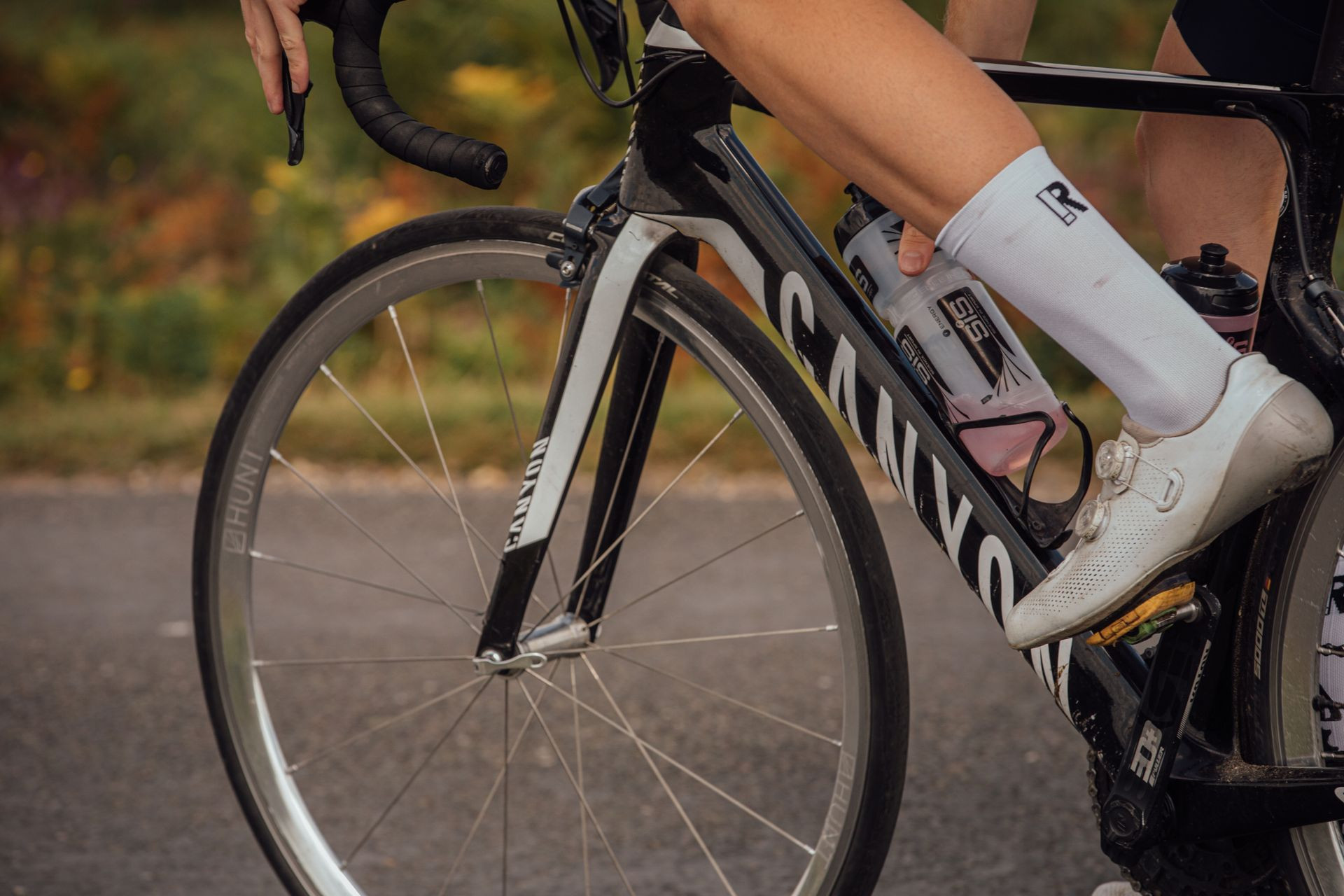 Front tire close up
Front tire close up
Image of a front tire, emphasizing tire pressure.
8.1 Why is Tire Pressure Important?
Tire pressure affects rolling resistance, grip, and ride comfort. Finding the optimal tire pressure balances these factors for the best riding experience.
8.2 How Do I Determine the Correct Tire Pressure?
Consider these factors when setting tire pressure:
- Tire Width: Wider tires can be run at lower pressures.
- Rider Weight: Heavier riders need higher tire pressures.
- Road Conditions: Rough roads benefit from lower tire pressures.
8.3 What Are the General Tire Pressure Guidelines?
| Tire Width | Rider Weight (lbs) | Recommended Pressure (psi) |
|---|---|---|
| 23mm | 150 | 95-105 |
| 25mm | 150 | 85-95 |
| 28mm | 150 | 75-85 |
| 23mm | 200 | 105-115 |
| 25mm | 200 | 95-105 |
| 28mm | 200 | 85-95 |
9. Fit Mudguards
Are mudguards essential for comfort? Yes, fitting mudguards is an underrated yet crucial step for staying comfortable while cycling in wet conditions. Mudguards protect you from rain and road spray, keeping your bum and backside dry, which significantly enhances your comfort and warmth. With various styles available, including clip-on and saddle-attached options, mudguards are a cost-effective way to improve your riding experience in wet weather.
 Rider on a winter bike with mudguards
Rider on a winter bike with mudguards
Image of a rider on a winter bike with mudguards, highlighting protection from the elements.
9.1 Why Are Mudguards Important?
Mudguards protect you from water, mud, and road debris, keeping you dry and comfortable in wet conditions. They also protect your bike components from corrosion.
9.2 What Are the Different Types of Mudguards?
- Full Coverage Mudguards: Provide maximum protection, covering the entire wheel.
- Clip-On Mudguards: Easy to install and remove, suitable for occasional use.
- Ass-Savers: Minimalist mudguards that attach to the saddle, providing basic protection.
9.3 What Are the Benefits of Using Mudguards?
| Benefit | Description |
|---|---|
| Stay Dry | Protects you from rain and road spray, keeping you dry and comfortable |
| Protect Bike | Protects your bike components from water and debris |
| Improve Visibility | Prevents spray from obstructing your vision |
10. Buy a New Bike (and Make Sure It’s the Right Size)
Is a new bike the ultimate solution? Yes, if all else fails, buying a new bike that fits properly might be the best long-term solution for your discomfort. Ensure you get properly assessed by a bike fitter to determine the ideal frame size and geometry for your body. A well-fitted bike will immediately feel more comfortable and efficient, transforming your riding experience.
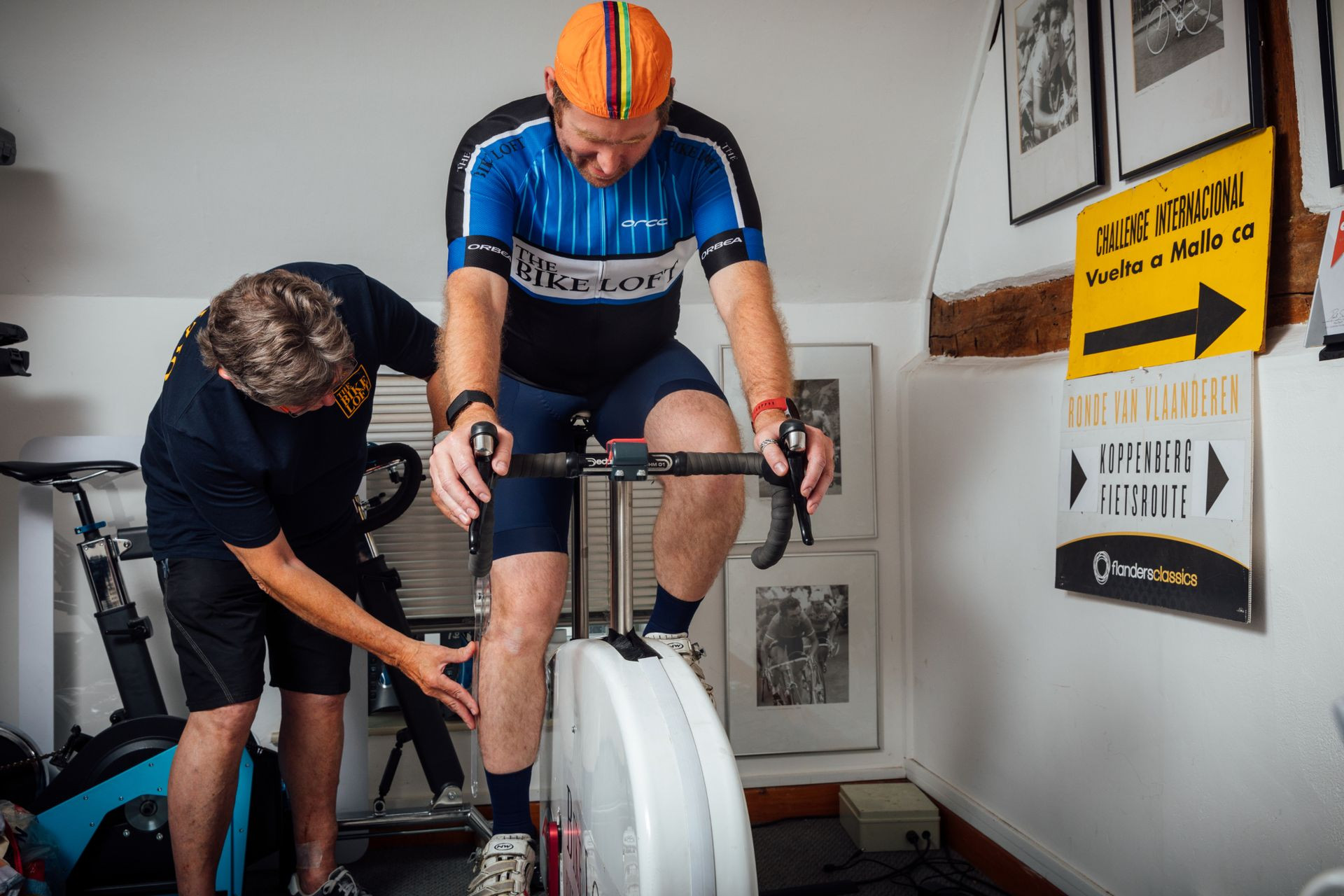 Rider getting a bike fit assessment
Rider getting a bike fit assessment
Image of a rider undergoing a bike fit assessment with an expert.
10.1 Why is Bike Size Important?
Bike size affects your reach, saddle height, and overall body position. A properly sized bike optimizes comfort, power output, and handling.
10.2 How Do I Determine the Correct Bike Size?
- Professional Bike Fit: A bike fitter can measure your body dimensions and recommend the ideal bike size and geometry.
- Online Size Charts: Many bike manufacturers provide online size charts based on height and inseam measurements.
- Test Ride: Test ride different bike sizes to see which feels most comfortable and natural.
10.3 What Are the Consequences of Riding the Wrong Size Bike?
| Issue | Symptoms |
|---|---|
| Poor Handling | Difficulty controlling the bike, unstable feeling |
| Discomfort | Pain in the neck, shoulders, back, knees, or hands |
| Reduced Power | Inefficient pedaling motion, difficulty generating power |
| Risk of Injury | Increased risk of overuse injuries, joint pain |
Making your bike seat more comfortable involves several adjustments and considerations. From optimizing your reach and handlebar height to experimenting with different saddles and tire pressures, each step contributes to a more enjoyable riding experience. If you’re looking for reliable information and a community to share your passion, visit usabikers.net for detailed guides, reviews, and a vibrant biker community.
FAQ: Making Your Bike Seat More Comfortable
1. Why is my bike seat so uncomfortable?
Your bike seat might be uncomfortable due to a variety of reasons, including incorrect saddle size, improper bike fit, or inadequate padding. It’s essential to assess these factors to find the root cause of the discomfort.
2. How do I choose the right bike saddle?
Choosing the right bike saddle involves considering your sit bone width, riding style, and personal preferences. Visit a local bike shop to get your sit bones measured and try out different saddle shapes and sizes.
3. Can bike shorts make a difference in comfort?
Yes, bike shorts with padding (chamois) can significantly improve comfort by providing extra cushioning and reducing friction. Look for high-quality bike shorts with a comfortable and supportive chamois.
4. What is the ideal saddle height?
The ideal saddle height allows for a slight bend in your knee at the bottom of the pedal stroke. Use the heel method or inseam measurement to find your starting point and adjust as needed for optimal comfort and efficiency.
5. How often should I replace my bike saddle?
You should replace your bike saddle when it starts to show signs of wear and tear, such as cracks, tears, or loss of padding. Depending on usage, a saddle typically lasts between 2 to 5 years.
6. Can adjusting my handlebars improve seat comfort?
Yes, adjusting your handlebars can indirectly improve seat comfort by changing your overall body position and weight distribution. Experiment with different handlebar heights and reach to find a more comfortable and balanced position.
7. What role does tire pressure play in seat comfort?
Tire pressure affects the amount of vibration and shock transmitted to your body. Lower tire pressures can improve comfort by absorbing bumps and smoothing out the ride, while higher pressures can provide a more efficient roll on smooth surfaces.
8. Are gel seat covers a good solution for discomfort?
Gel seat covers can provide temporary relief from discomfort, but they are not always the best long-term solution. They can add extra bulk and may not address the underlying issues causing the discomfort.
9. How can I prevent saddle sores?
Preventing saddle sores involves maintaining good hygiene, wearing clean bike shorts, using chamois cream, and ensuring a proper bike fit. Avoid prolonged pressure on sensitive areas and take breaks during long rides.
10. Is a professional bike fit worth the investment?
Yes, a professional bike fit is often worth the investment, especially if you experience persistent discomfort or pain while cycling. A bike fitter can assess your biomechanics and make personalized adjustments to your bike to optimize comfort and performance.
Ready to take your cycling comfort to the next level? Explore usabikers.net for in-depth articles, expert advice, and a supportive community to help you find the perfect setup. Join our forums, share your experiences, and discover new tips and tricks to make every ride a pleasure. Connect with fellow enthusiasts and unlock the full potential of your cycling adventures today. Visit usabikers.net now and start your journey to a more comfortable and enjoyable ride!
Address: 801 Sturgis Main St, Sturgis, SD 57785, United States.
Phone: +1 (605) 347-2000.
Website: usabikers.net.
